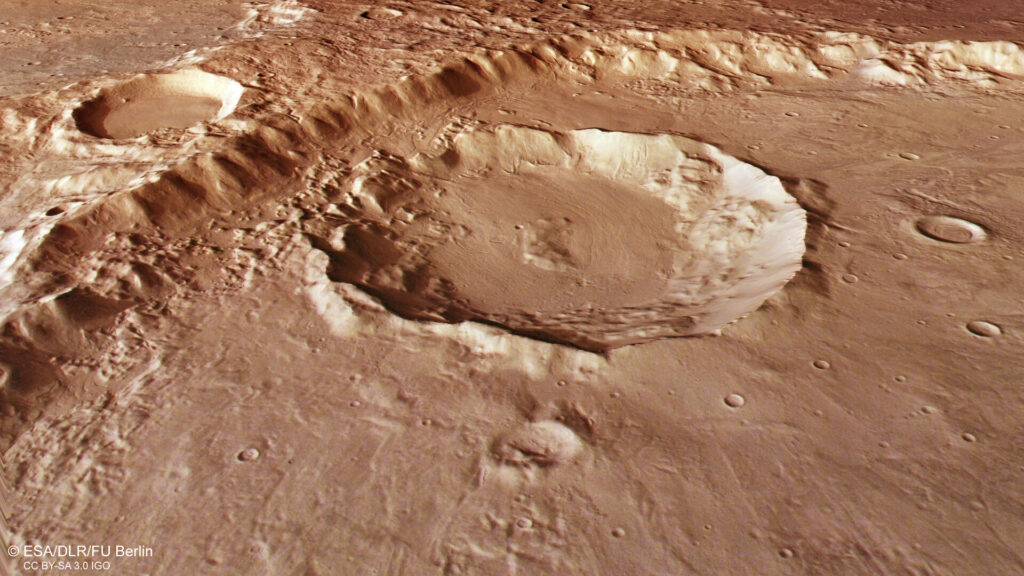The Mars Express mission support team has published a new series of images of the Martian surface. They demonstrate an ancient region in the Southern Hemisphere of the planet known as Terra Sirenum.

Wind Erosion
Terra Sirenum is a vast upland located between equatorial and polar latitudes. The main image of Mars Express shows one of its sections dominated by a large crater. Its diameter is about 70 km.

Traces of wind erosion can be found inside the crater. So, in its lower part, characteristic irregularities are visible, known as yardangs. They were formed under the influence of the Martian wind. As for the dark spot, it is sand, which is also caused by the wind.
Traces of ice and water
Inside a large crater is a smaller crater with a diameter of about 70 km. Its structure, as well as the outlines of a smaller shock formation located nearby, indicate that at the time of their formation, this region could have been covered with ice or water. This is indicated by traces on their surface and sedimentary deposits. Most likely, they were left by glaciers consisting of a mixture of ice and stone fragments.

In the main image of Mars Express, you can see a large valley up to 1.8 km wide (left part of the image). It is believed that this is a channel of water runoff, which was formed as a result of melting ice in a nearby lowland. In the right part of the image, you can see a grid of smaller valleys that also have an aquatic origin.
Ancient cracks and lava
In addition to traces of ice and water, the images also show the consequences of the past geological activity of the Red Planet. A crack stretches parallel to the large valley in the lower left corner of the main image. It was formed as a result of the rupture of the Martian crust caused by its tectonic stress.

Lava has also left its traces in this region. In particular, it once filled the bottom of the crater in the upper right part of the main image. And the grid of ridges located below and to the right was formed as a result of compression of the lava field by tectonic forces.
According to https://www.esa.int
Follow us on Twitter to get the most interesting space news in time
https://twitter.com/ust_magazine

